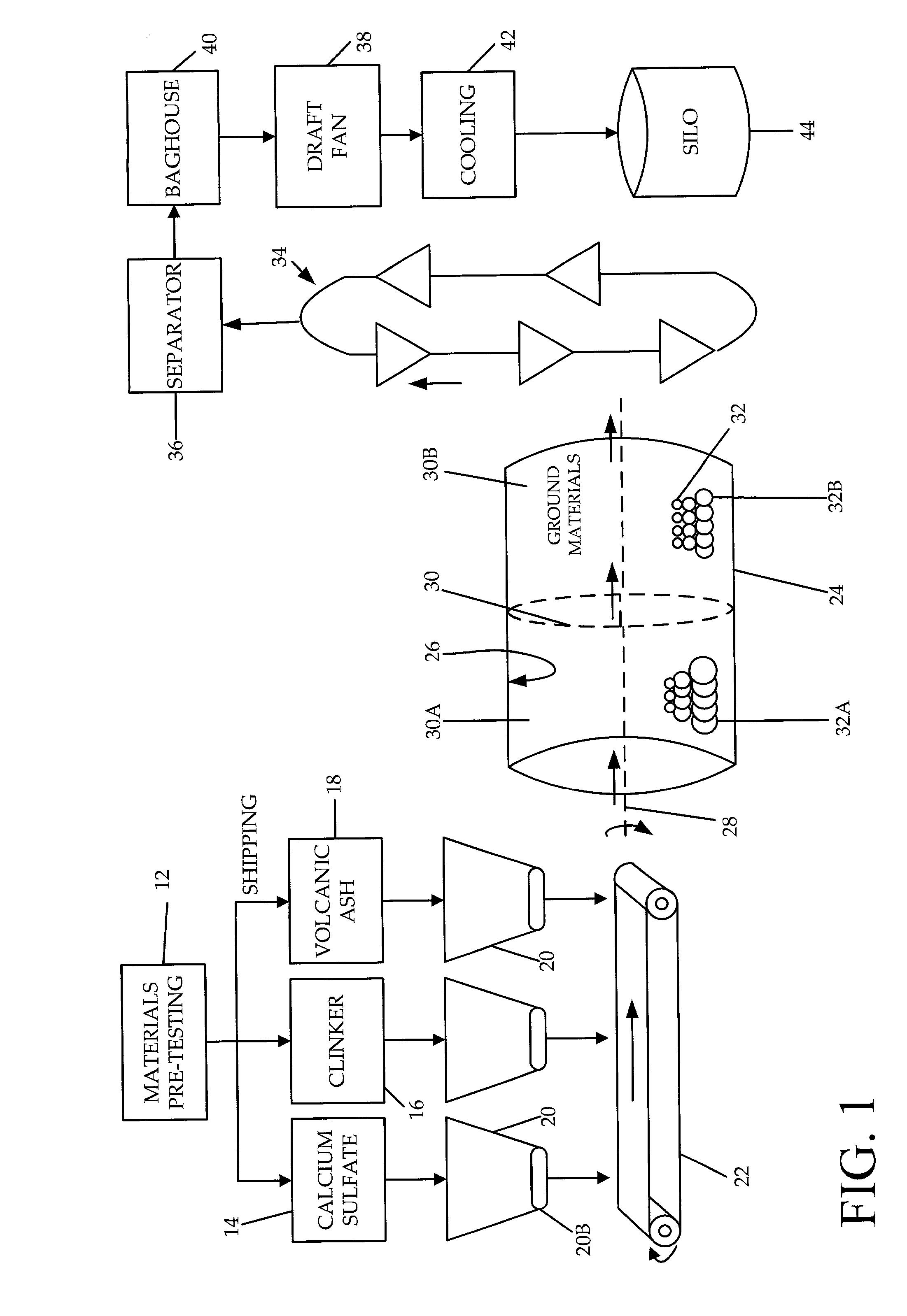Process for producing a blended cement having enhanced cementitious properties capable of combination with class C fly ash
a technology of blended cement and fly ash, which is applied in the direction of climate sustainability, solid waste management, sustainable waste treatment, etc., can solve the problems of portland cement concrete structure susceptible to deterioration, damage to concrete, etc., and achieves improved workability, improved sulfate resistance, and reduced permeability
- Summary
- Abstract
- Description
- Claims
- Application Information
AI Technical Summary
Benefits of technology
Problems solved by technology
Method used
Image
Examples
Embodiment Construction
[0015] The present invention is herein described as a method of producing a blended cement meeting ASTM C-595 and C-1157 standards. In one embodiment, the method of the present invention utilizes calcium sulfate (14), portland cement clinker (16), and volcanic ash (18) to produce a blended cement capable of exhibiting ASR and sulfate resistance while still allowing the addition of Class C fly ash at the concrete mixer.
[0016] Referring to FIG. 1, each material (14, 16 and 18, respectively) is sampled and pre-tested to insure that it each material is suitable for use with blended cement. In one embodiment, the present invention utilizes portland cement clinker (16) suitable for use in producing portland cement, as specified by ASTM C-150. For example, in one embodiment of the invention, Type I or Type III portland cement clinker is used. The present invention uses calcium sulfate, usually in the form of gypsum, that has been extracted from a natural source or utilized as a by-product ...
PUM
| Property | Measurement | Unit |
|---|---|---|
| diameter | aaaaa | aaaaa |
| diameter | aaaaa | aaaaa |
| total weight | aaaaa | aaaaa |
Abstract
Description
Claims
Application Information
 Login to View More
Login to View More - R&D
- Intellectual Property
- Life Sciences
- Materials
- Tech Scout
- Unparalleled Data Quality
- Higher Quality Content
- 60% Fewer Hallucinations
Browse by: Latest US Patents, China's latest patents, Technical Efficacy Thesaurus, Application Domain, Technology Topic, Popular Technical Reports.
© 2025 PatSnap. All rights reserved.Legal|Privacy policy|Modern Slavery Act Transparency Statement|Sitemap|About US| Contact US: help@patsnap.com

